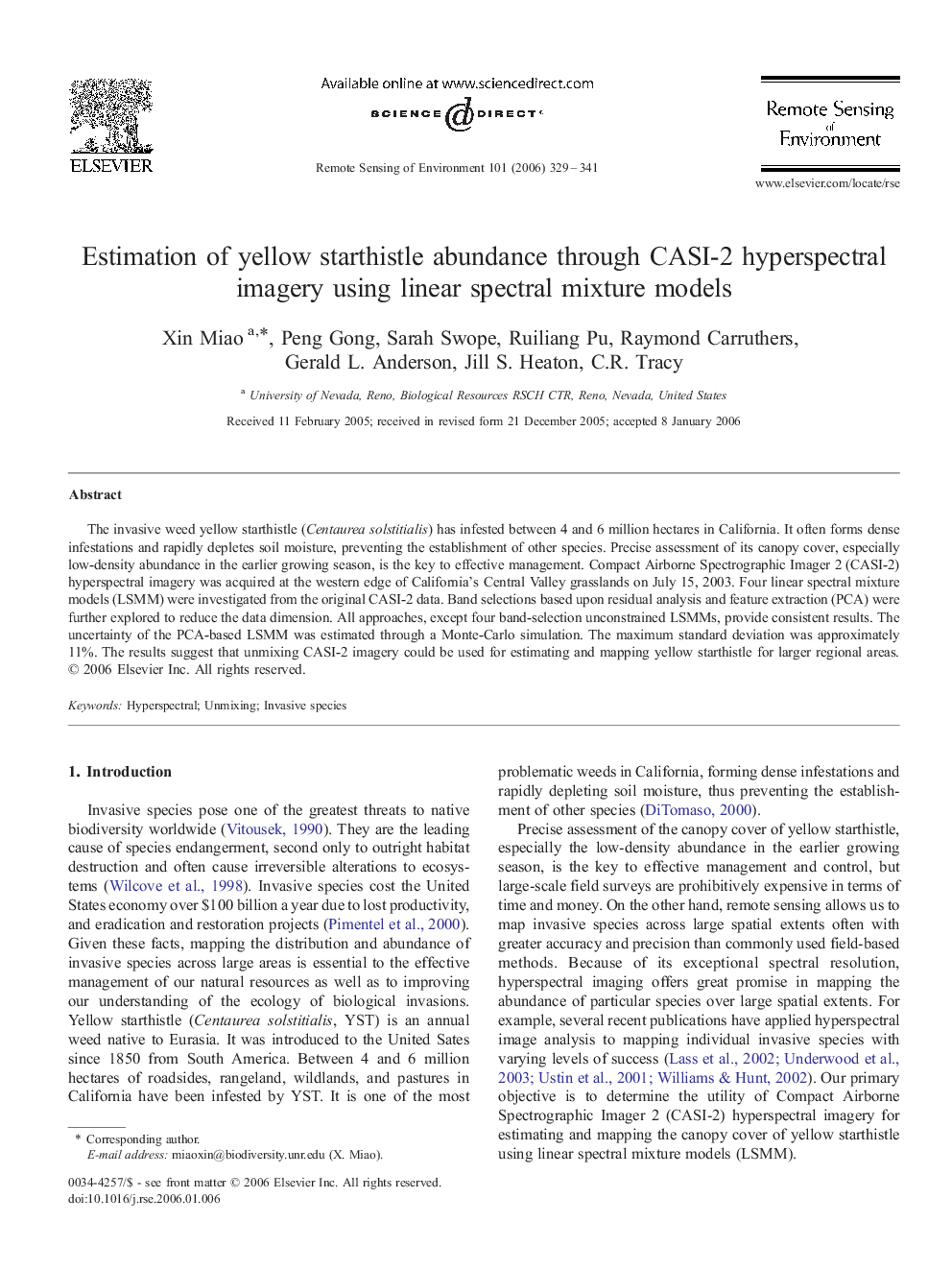| کد مقاله | کد نشریه | سال انتشار | مقاله انگلیسی | نسخه تمام متن |
|---|---|---|---|---|
| 4461094 | 1621371 | 2006 | 13 صفحه PDF | دانلود رایگان |

The invasive weed yellow starthistle (Centaurea solstitialis) has infested between 4 and 6 million hectares in California. It often forms dense infestations and rapidly depletes soil moisture, preventing the establishment of other species. Precise assessment of its canopy cover, especially low-density abundance in the earlier growing season, is the key to effective management. Compact Airborne Spectrographic Imager 2 (CASI-2) hyperspectral imagery was acquired at the western edge of California's Central Valley grasslands on July 15, 2003. Four linear spectral mixture models (LSMM) were investigated from the original CASI-2 data. Band selections based upon residual analysis and feature extraction (PCA) were further explored to reduce the data dimension. All approaches, except four band-selection unconstrained LSMMs, provide consistent results. The uncertainty of the PCA-based LSMM was estimated through a Monte-Carlo simulation. The maximum standard deviation was approximately 11%. The results suggest that unmixing CASI-2 imagery could be used for estimating and mapping yellow starthistle for larger regional areas.
Journal: Remote Sensing of Environment - Volume 101, Issue 3, 15 April 2006, Pages 329–341